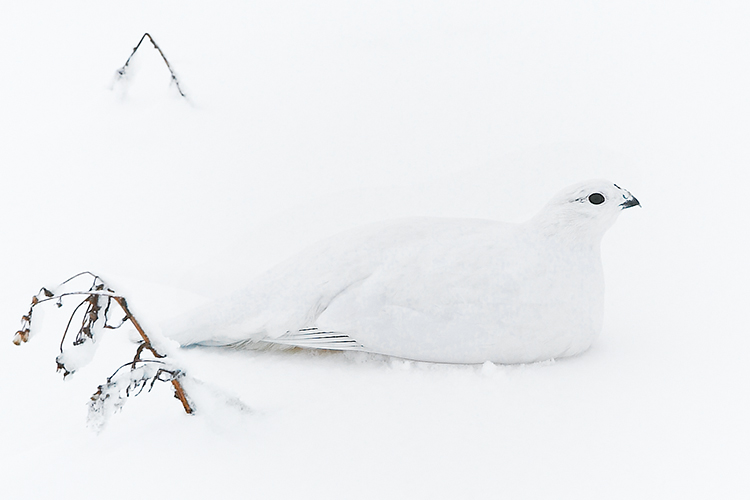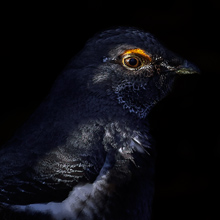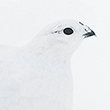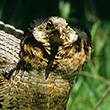
Availability: Limited Edition Print; RF Stock (??)
In the Field
Pristine Ptarmigan. Cape Churchill, MB, Canada. October 24, 2004.
What you're looking at here is an example of a highly evolved anti-predator strategy - its called protective coloration. Like Arctic Hares - and many other species - Willow Ptarmigans change their colour seasonally to match their environment. And, in winter, the tundra is pretty easy to match in colour - it's almost monochromatically white!
I faced two main challenges in capturing this image. The first was seeing the bird! I had been photographing sparring polar bears who were about 50 metres away. During a break in the action I looked down and there the Ptarmigan was - about 3 metres away! It had to have been sitting there for at LEAST 30 minutes, if not much longer, before I noticed it. Pretty effective camouflage.
The second challenge was getting the exposure right. The dominant colour in this image is obviously white - at least 90% of the image is pretty much uniformly white. I shoot about 95% of my images using Nikon's multi-segment light metering system (called Matrix Metering by Nikon - Canon's equivalent is known as Evaluative Metering) and find it amazingly accurate and reliable. But...no light meter in existence today would give an accurate reading on this scene - all would suggest an under-exposure that would turn the scene to a mid-gray colour. To ensure that the whites came out white (this is starting to sound like a Tide commercial!) I overexposed by a full stop.
Behind the Camera
Pristine Ptarmigan. Cape Churchill, MB, Canada. October 24, 2004.
Digital Capture; Compressed RAW (NEF) format; ISO 200.
Nikon D2H with Nikon 200-400 mm f/4G ED-IF AF-S VR lens @ 310 mm (465 mm equivalent with digital conversion factor) supported on bean bag. VR turned to "On" and in "Normal" mode.
1/320s @ f8; +1.0 stop exposure compensation from matrix-metered exposure setting.
At the Computer
Pristine Ptarmigan. Cape Churchill, MB, Canada. October 24, 2004.
RAW Conversion, including first-pass sharpening, exposure compensation, and tone curve adjustment, using Phase One's C1 Pro. Multiple RAW conversions (2 at different exposure settings) to extend dynamic range of captured image, in this case primarily to restore shadow detail on along the bottom of the bird (where the bird meets the snow).
All further digital correction on 16-bit TIFF file using Adobe's Photoshop CS, including compositing and masking of various exposure versions, selective saturation enhancement, and selective sharpening for web output.
Conservation
Pristine Ptarmigan. Cape Churchill, MB, Canada. October 24, 2004.
Ten percent of the revenue generated by this image will be donated to the Yellowstone to Yukon Conservation Initiative.
Species Status in Canada*: This species is not designated as at risk.
The Willow Ptarmigan (Lagopus lagopus) is a small member of the pheasant family that is found across the tundra of North America. During the winter the Willow Ptarmigan is snowy white (as pictured above), but change their plumage to a brown mottled colour in the spring. While the species is generally common throughout its range, the population does cycle from abundant to scarce. The Willow Ptarmigan is currently harvested as a game bird.
The Yellowstone to Yukon (Y2Y) Conservation Initiative seeks to ensure that the world-renowned wilderness, wildlife, native plants, and natural processes of the Yellowstone to Yukon region continue to function as an interconnected web of life, capable of supporting all of its natural and human communities, for current and future generations.
*as determined by COSEWIC: The Committee on the Status of Endangered Wildlife in Canada























